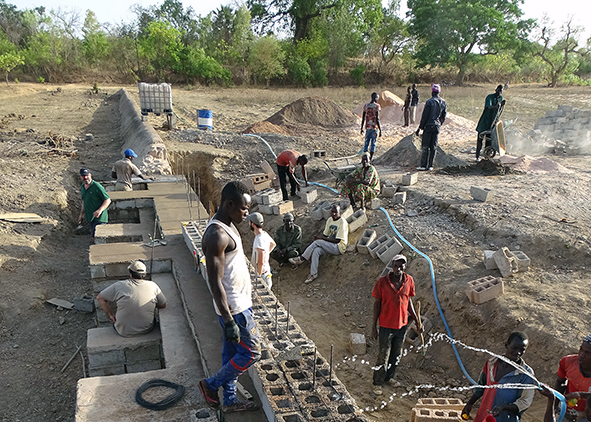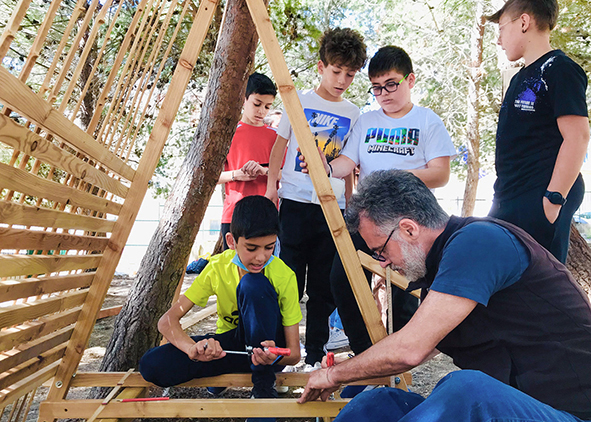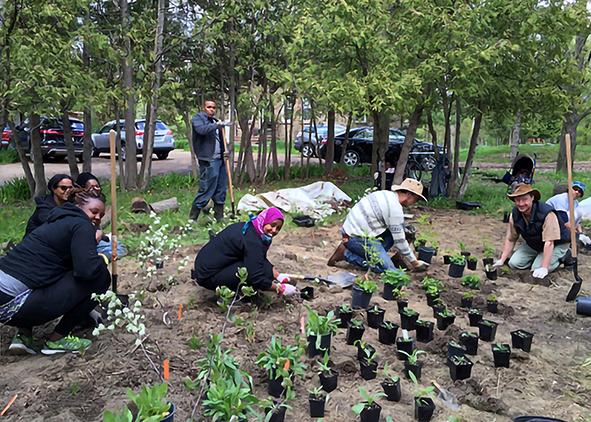
AGATHÓN
International Journal
of Architecture, Art and Design
ISSN (online) 2532-683X
ISSN (print) 2464-9309
SDG 2 | Zero Hunger
Goal 2 | End hunger, achieve food security and improved nutrition and promote sustainable agriculture
Although the situation has improved in numerous countries, many people still suffer from hunger and malnutrition around world. Undernourishment affects nearly 800 million people worldwide – most of them women and children. The aim of the 2030 Agenda is to end hunger and all forms of malnutrition around the world within the next 15 years. In view of the rapidly growing global demand for food, it is estimated that food production worldwide will need to have doubled by 2050. Some 70% of people who are undernourished rely directly or indirectly on agriculture for their livelihoods, hence it is smallholder farmers who are at risk of undernourishment. Besides aiming to eliminate hunger, Goal 2 includes a target on ending all forms of malnutrition. Food quality is just as important as food quantity. Goal 2 also incorporates economic aspects, such as doubling the agricultural productivity and income of small-scale farmers by 2030. Furthermore, it features provisions on sustainable agriculture to prevent increased food production from harming the environment.
- Target 2.1 | By 2030, end hunger and ensure access by all people, in particular the poor and people in vulnerable situations, including infants, to safe, nutritious and sufficient food all year round.
- Target 2.2 | By 2030, end all forms of malnutrition, including achieving, by 2025, the internationally agreed targets on stunting and wasting in children under 5 years of age, and address the nutritional needs of adolescent girls, pregnant and lactating women and older persons.
- Target 2.3 | By 2030, double the agricultural productivity and incomes of small-scale food producers, in particular women, indigenous peoples, family farmers, pastoralists and fishers, including through secure and equal access to land, other productive resources and inputs, knowledge, financial services, markets and opportunities for value addition and non-farm employment.
- Target 2.4 | By 2030, ensure sustainable food production systems and implement resilient agricultural practices that increase productivity and production, that help maintain ecosystems, that strengthen capacity for adaptation to climate change, extreme weather, drought, flooding and other disasters and that progressively improve land and soil quality.
- Target 2.5 | By 2020, maintain the genetic diversity of seeds, cultivated plants and farmed and domesticated animals and their related wild species, including through soundly managed and diversified seed and plant banks at the national, regional and international levels, and promote access to and fair and equitable sharing of benefits arising from the utilization of genetic resources and associated traditional knowledge, as internationally agreed.
- Target 2.a | Increase investment, including through enhanced international cooperation, in rural infrastructure, agricultural research and extension services, technology development and plant and livestock gene banks in order to enhance agricultural productive capacity in developing countries, in particular least developed countries.
- Target 2.b | Correct and prevent trade restrictions and distortions in world agricultural markets, including through the parallel elimination of all forms of agricultural export subsidies and all export measures with equivalent effect, in accordance with the mandate of the Doha Development Round
- Target 2.c | Adopt measures to ensure the proper functioning of food commodity markets and their derivatives and facilitate timely access to market information, including on food reserves, in order to help limit extreme food price volatility.





















































































